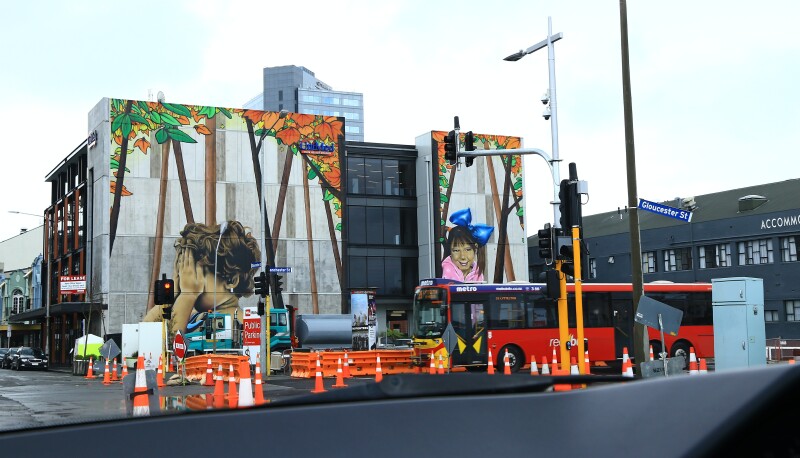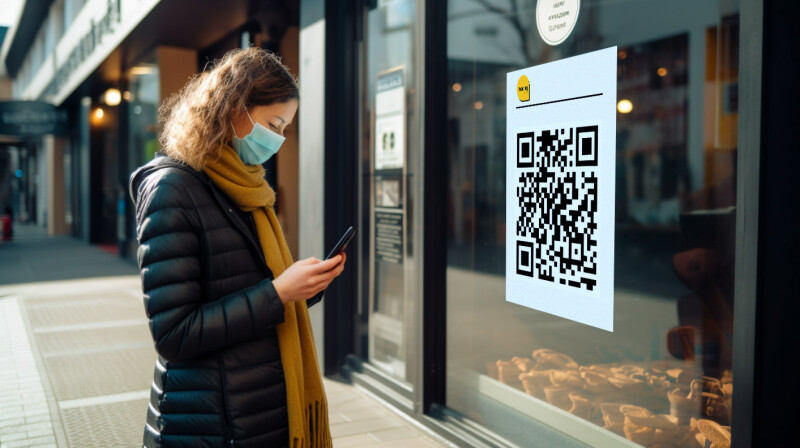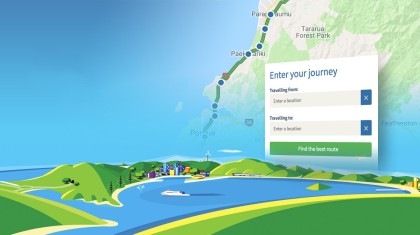The Challenge
It was late in the day when the Chief Information Officer of Christchurch’s public transport provider picked up the phone. His organisation was charged with providing free public transport under Alert Level 4, and the requirements for operating safely in this new environment were largely unknown. MadeCurious had been working with this partner for several years, particularly in the complex problem-solving space; we were a trusted pair of hands for this novel challenge.
It quickly became apparent that an essential safety measure needed to be put in place - contact tracing. When an infected person was identified, the Ministry and District Health Board staff needed to be able to use contact tracing to track down individuals who may have come into contact with this point of exposure and let them know they may have been exposed to the virus.
Our partner needed to implement contact tracing method for bus users, but faced several challenges:
- The solution had to be voluntary for passengers
- The existing card payment system couldn’t be used to track passenger information as the buses were running free of charge (even if it could, card readers were situated near the front door, and passengers were only able to use the rear doors in order to protect bus drivers).
- Passengers needed to be able to enter their information retrospectively, without knowing the bus number
- Staff needed to be able to enter passenger information
- Staff needed a dashboard to monitor daily bus use
- The solution was needed immediately.
The Solution
A quick ideation session between key parties formed up a number of solutions. As always, user experience was at the forefront of discussions - removing as many barriers to use as possible would result in a higher uptake of voluntary contact tracing check ins.
A native app would take too long to build and require the user to download it. QR code scanning was confusing for some passengers. The solution had to be simple, efficient, trustworthy and available in the shortest possible time.
The MVP solution was a simple web-based form any passenger could access on their mobile phone. It captured only essential information, and linked with the organisation’s existing realtime fleet monitoring system - where each bus has a unique ID and is tracked against its route. Telemetry data linked passenger check ins with route and bus information.
Our team worked late into the evening to put together a prototype of the solution (ready for review by the next morning). Within a few days, the web app was rolled out across the public transport system in Canterbury.


I was contacted by ECAN's Head of Public Transport who urgently needed an app produced to manage contact tracing on buses, and he asked if I could recommend a company/person to develop it. MadeCurious came to mind immediately as we have used them for other development work. From the time I spoke to the Managing Director, George Wills, to the time they had developed a web app which Public Transport could test, it was less than 24 hours! And this was during Level 4 lockdown. The app was very useful, well received, and I believe, made available for other organisations to use at no cost. Now that is a great customer experience!
Giving Back
Building a contact tracing solution for a valued partner was just the beginning. As lockdown began, some of our key projects suddenly went on hold, leaving members of our team with time on their hands - and a deep interest in how technology and design could support the Covid-19 fight.
During the lockdown, the team brainstormed ways we could contribute. In the first few days of use, our public transport solution successfully registered thousands of Cantabrians’ contact tracing information as essential workers travelled around the public transport network. We knew that with a few more enhancements and a bit of polish, the solution we’d built could have a much broader application.
As Level 2 and 3 became a not-too-distant reality, all businesses and organisations were faced with meeting government contact tracing guidelines, safeguarding community health. Keeping appropriate records supported this initiative to limit the virus’ spread. During this time there was still no central-government mandated solution available. Businesses were clamouring to re-open safely but unsure how to balance public needs with fundamental issues like privacy.
Delivering Value is a core value for MadeCurious, we focus on it both for our partnerships and within our team. Improving and making our tracing app available to anyone who needed it became our next obvious step.
Ultimately Tracing.co.nz was released to the public under Level 3, free of charge. Any business, organisation or individual could use the app at no cost, supporting our community’s recovery.
How it Worked
Tracing.co.nz digitally captured the required contact tracing data. It was simple and efficient, allowing businesses to meet their obligations easily. Health organisations could then easily access tracing data if required.
Meeting government best practice guidelines was immensely challenging for local businesses trying their best to get operational again while simultaneously digesting complex requirements - many of which were regularly changing.
In our modern, data-driven society, personal information and data collection is a valuable commodity. Many of us protect our privacy diligently. If we wanted people to use it, creating a solution that put privacy and security first, was essential. Trust was pivotal.
Fortunately, as an experienced partner of government agencies, MadeCurious always puts these concerns at the forefront, putting best practice protection in place was second nature. Ultimately, Tracing data was securely stored for 60 days, meeting government privacy and security regulations and Worksafe guidance. It was held by us as a neutral third party and only provided to accredited health organisations if contact tracing was needed. After 60 days, the data was permanently deleted.
Tracing.co.nz was independently audited by the Office of the Privacy Commissioner and assessed on its security, accessibility and data privacy measures. It received an “Excellent” score.
User Experience
Tracing also needed to be user friendly. Just like the original public transport solution, the tracing.co.nz web-based app worked on any device without a download requirement or the need for a QR code reader.
Data could be captured using good old fashioned pen and paper if needed, with businesses then able to upload the forms to tracing.co.nz for secure storage. You could check in from home, and check in other members of your bubble.
The process was quick and easy and free to anyone who wanted to use it.

It is great that a New Zealand based IT solutions company is offering this type of application free to us. As a company and industry that has suffered significantly during this unexpected global event, it is great that we can use such a tool and get going again.
Technically Speaking
Tracing.co.nz had to be able to handle the load that comes with thousands of people checking in and out of locations each day. It also had to be secure, and cheap to run as the service was offered for free.
Technically speaking, the client is a React application, that connected via GraphQL using AWS AppSync to a DynamoDB database. Dynamo is a NoSQL key/value store, and while that means it doesn’t come with many of the nice features and data integrity guarantees that come with a relational database, it does mean it is fast. Querying is more complex, but since the only time data was read for generating exports for the Ministry of Health, we were able to optimise this one use case.
AWS Lambda functions were used in the few circumstances where we needed server-side business logic. For example, registrations were validated and emails sent via our Lambda functions that listen to specific database events. These worked well, as the service was ‘spun up’ on request, meaning that whenever they are not needed, there was no compute power being expended. It was cheap to run and its low electricity requirements meant a small footprint on our environment.

Working with Tracing.co.nz couldn’t have been any easier. The tracing system is really easy to set up and comes with the resources we required. We research a lot of different tracing systems and found tracing.co.nz to be a cut above the rest.
Key Stats
-
Locations used
More than 5,000
-
Unique users
245,000
5% of all New Zealanders checked-in to a location using Tracing.co.nz
-
Peak check-ins
20,000 per day
Ultimately, the New Zealand Government delivered its own Covid Tracer App. When that became available, we transitioned all the organisations we had been supporting to move across to the new centralised system. One of the great privileges of our work is bringing people and technology together to solve complex problems.






